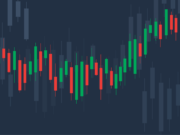In the small town of Fredonia, New York, in 1821, William Hart, often regarded as the “father of natural gas” in America, drilled the first natural gas well. It was a modest operation, barely 27 feet deep, but it marked the beginning of an era. Hart’s vision was simple yet revolutionary: to harness the power of natural gas, a resource abundantly available yet overlooked. His success in Fredonia, where he piped the gas into nearby homes and businesses, lit the spark of an industry that would, centuries later, become a cornerstone of global energy.
Geopolitical Dynamics: The Natural Gas Nexus
Natural gas has quietly ascended to a position of strategic importance in global geopolitics. The recent years have seen a dramatic shift in the natural gas market, with geopolitical tensions and supply-demand imbalances creating a volatile yet opportunistic landscape. Countries rich in natural gas reserves, such as Russia, Qatar, and the United States, wield significant influence in global energy politics. The European energy crisis, exacerbated by geopolitical tensions with Russia, has underscored the critical role of natural gas as a geopolitical tool.
Advancements in Natural Gas and LNG Technology
The natural gas industry is not just about extraction and supply; it’s also a story of technological innovation. The advent of Liquefied Natural Gas (LNG) technology has revolutionized the market, enabling the transportation of natural gas across oceans, transforming it from a regional to a global commodity. Advances in hydraulic fracturing and horizontal drilling have unlocked vast reserves of shale gas, particularly in the United States, reshaping the global energy landscape. These technological strides have not only increased the availability of natural gas but have also made it a cleaner and more efficient energy source.
Top Natural Gas Stocks: A Window of Opportunity
1. Cheniere Energy (LNG): As a pioneer in the North American LNG export market, Cheniere Energy stands at the forefront of the LNG revolution. The company’s strategic positioning, with its Sabine Pass and Corpus Christi liquefaction facilities, positions it to capitalize on the growing global demand for LNG. Cheniere’s long-term contracts and expanding capacity make it a compelling choice for investors looking to tap into the LNG market.
2. EQT Corporation (EQT): The largest natural gas producer in the United States, EQT Corporation, has a significant presence in the prolific Marcellus Shale. The company’s focus on cost-efficient operations and its vast reserve base offer a stable and potentially lucrative investment, especially as natural gas prices fluctuate.
3. Gazprom (OGZPY): A behemoth in the global natural gas sector, Russia’s Gazprom holds the world’s largest natural gas reserves. While investing in Gazprom involves navigating geopolitical risks, the company’s dominance in the European gas market and its pivotal role in global energy politics make it an intriguing, albeit high-risk, investment option.
Conclusion: Embracing the Future with Natural Gas
As the world grapples with the dual challenges of energy security and climate change, natural gas stands out as a critical piece of the puzzle. Its role in geopolitics, coupled with technological advancements, positions natural gas as a key player in the global energy transition. For investors, the natural gas market offers a spectrum of opportunities, from stable, dividend-paying giants to high-growth LNG pioneers. As we reflect on the humble beginnings of William Hart’s venture in Fredonia, it’s clear that natural gas, often overshadowed by its more flamboyant counterparts like oil and renewables, is a silent giant, quietly shaping the future of energy.











